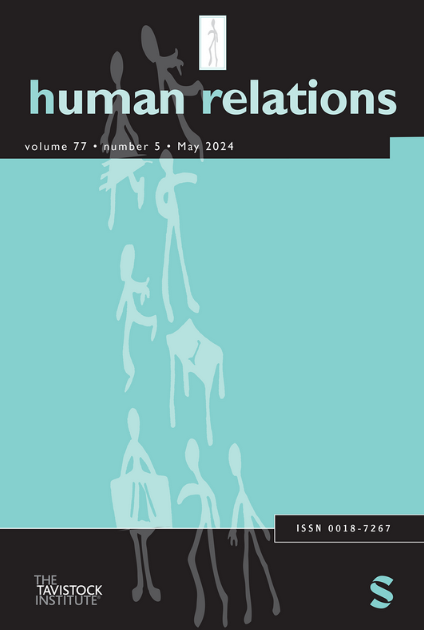时间在狩猎:用眼球追踪法调查时间压力和底线心态
IF 5.4
2区 管理学
Q1 MANAGEMENT
引用次数: 0
摘要
为什么以及何时人们会采用底线心态(BLM)作为一种适应性策略?本研究超越了静态的个体差异,探索了作为一种激活的心理状态的BLM的动态触发器。基于威胁刚性理论,我们提出时间压力可以通过促进局部处理(狭隘地关注即时任务)来驱动人们采用BLM。我们进一步发现,时间领导可以调节时间压力和局部加工之间的关系,从而减轻后续的劳动行为。通过三个研究,我们对该模型进行了检验:研究1采用眼动追踪的实验室实验来证实时间压力对局部加工的因果效应(n = 120);研究2是一项在线实验,通过操纵局部加工建立了局部加工与BLM之间的因果关系(n = 300);研究3通过对101名员工10个工作日的经验抽样研究,验证了完整的理论模型。我们的研究结果揭示了时间压力如何通过局部加工来塑造工作能力管理,并强调了时间领导作为实际缓冲的作用。我们讨论了管理工作场所时间压力的意义,并提出了未来的研究方向,以加深对组织中BLM的状态性质的理解。本文章由计算机程序翻译,如有差异,请以英文原文为准。
Time is hunting: Investigating time pressure and bottom-line mentality with an eye-tracking approach
Why and when will people adopt bottom-line mentality (BLM) as an adaptive strategy? This research explores the dynamic triggers of BLM as an activated mental state, moving beyond static individual differences. Based on threat rigidity theory, we propose that time pressure can drive people to adopt BLM by fostering local processing—a narrow focus on immediate tasks. We further suggest that temporal leadership can moderate the relationship between time pressure and local processing, thereby mitigating subsequent BLM. Through three studies, we test this model: Study 1 uses a lab experiment with eye-tracking to confirm time pressure’s causal effect on local processing ( n = 120); Study 2, an online experiment, establishes the causal link between local processing and BLM by manipulating local processing ( n = 300); and Study 3, an experience sampling study with 101 employees over 10 workdays, validates the complete theoretical model. Our findings reveal how time pressure shapes BLM through local processing and highlight temporal leadership as a practical buffer. We discuss implications for managing workplace time pressure and propose future research directions to deepen understanding of the state-like nature of BLM in organizations.
求助全文
通过发布文献求助,成功后即可免费获取论文全文。
去求助
来源期刊

Human Relations
Multiple-
CiteScore
12.60
自引率
7.00%
发文量
82
期刊介绍:
Human Relations is an international peer reviewed journal, which publishes the highest quality original research to advance our understanding of social relationships at and around work through theoretical development and empirical investigation. Scope Human Relations seeks high quality research papers that extend our knowledge of social relationships at work and organizational forms, practices and processes that affect the nature, structure and conditions of work and work organizations. Human Relations welcomes manuscripts that seek to cross disciplinary boundaries in order to develop new perspectives and insights into social relationships and relationships between people and organizations. Human Relations encourages strong empirical contributions that develop and extend theory as well as more conceptual papers that integrate, critique and expand existing theory. Human Relations welcomes critical reviews and essays: - Critical reviews advance a field through new theory, new methods, a novel synthesis of extant evidence, or a combination of two or three of these elements. Reviews that identify new research questions and that make links between management and organizations and the wider social sciences are particularly welcome. Surveys or overviews of a field are unlikely to meet these criteria. - Critical essays address contemporary scholarly issues and debates within the journal''s scope. They are more controversial than conventional papers or reviews, and can be shorter. They argue a point of view, but must meet standards of academic rigour. Anyone with an idea for a critical essay is particularly encouraged to discuss it at an early stage with the Editor-in-Chief. Human Relations encourages research that relates social theory to social practice and translates knowledge about human relations into prospects for social action and policy-making that aims to improve working lives.
 求助内容:
求助内容: 应助结果提醒方式:
应助结果提醒方式:


